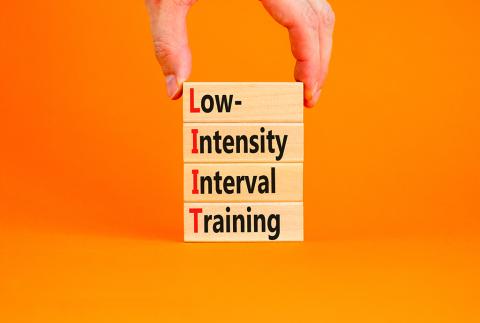
Exercise isn't just for athletes - it's a powerful tool that can significantly impact our well-being before, during, and after cancer treatments. In fact, research suggests that physical activity can go beyond survivorship and influence various aspects of health, including mental well-being, quality of life, fatigue levels, and overall physical functioning.
It may seem counterintuitive to engage in physical activity when fatigue is a significant concern during cancer treatment, however, studies indicate that avoiding inactivity can yield better outcomes. The key is finding the right balance, and that's where Low Intensity Interval Training (LIIT) comes into play.
Unlike its high-intensity counterpart (HIIT), LIIT focuses on gentler intervals while reaping substantial benefits. HIIT often pushes heart rates to 80-90% of their maximum, whereas LIIT maintains heart rates between 60-70% of the max. This range allows for easy conversation during exercise without feeling breathless. Engaging in LIIT for 30 minutes three times a week can significantly improve energy management and may help maintain muscle mass and function, improve appetite, support immune health, and facilitate better sleep.
Below are three examples of simple LIIT-type exercises to consider starting with:
- The Circuit
- Perform 10 slow squats, followed by 90 seconds of rest.
- Step forward in 10 lunges, then rest for 90 seconds.
- Complete 10 wall push-ups, followed by 90 seconds of rest.
- Repeat for a total of 6 sets, followed by a 2–3-minute break before repeating.
- Yoga
- Join one of our online yoga sessions or refer to this resource for yoga poses.
- Flow through several yoga poses for 90 seconds.
- Rest for 2-3 minutes.
- Cardiovascular exercise
- Jog for 1 minute, followed by 2 minutes of walking.
- Repeat the sequence 4-6 times in a set without a break.
- Rest for 3 minutes between sets.
LIIT exercises are ideally continued for 30-45 minutes, starting at a manageable duration, and gradually increasing as energy levels rise. Optimal exercise duration is based on your individual capacity and heart rate response. The recommended exercise goal ranges from 150 to 300 minutes weekly, translating to roughly 30-60 minutes five times a week. As mentioned earlier, maintaining a heart rate between 60-70% of your maximum heart rate is the core of LIIT. While not mandatory, using a heart rate monitor or “smart watch” can ensure you stay within this range. To calculate your target heart rate, subtract your age from 220. For instance, if you're 60 years of age, your maximum heart rate is 160. Then, calculate 60-70% of that range (e.g., 96-112 beats per minute) to set your intensity level.
Before starting any exercise program, we recommend consulting your health-care provider to tailor a routine that suits your unique needs and circumstances.
Author: Vanessa Phillips, CCNM student